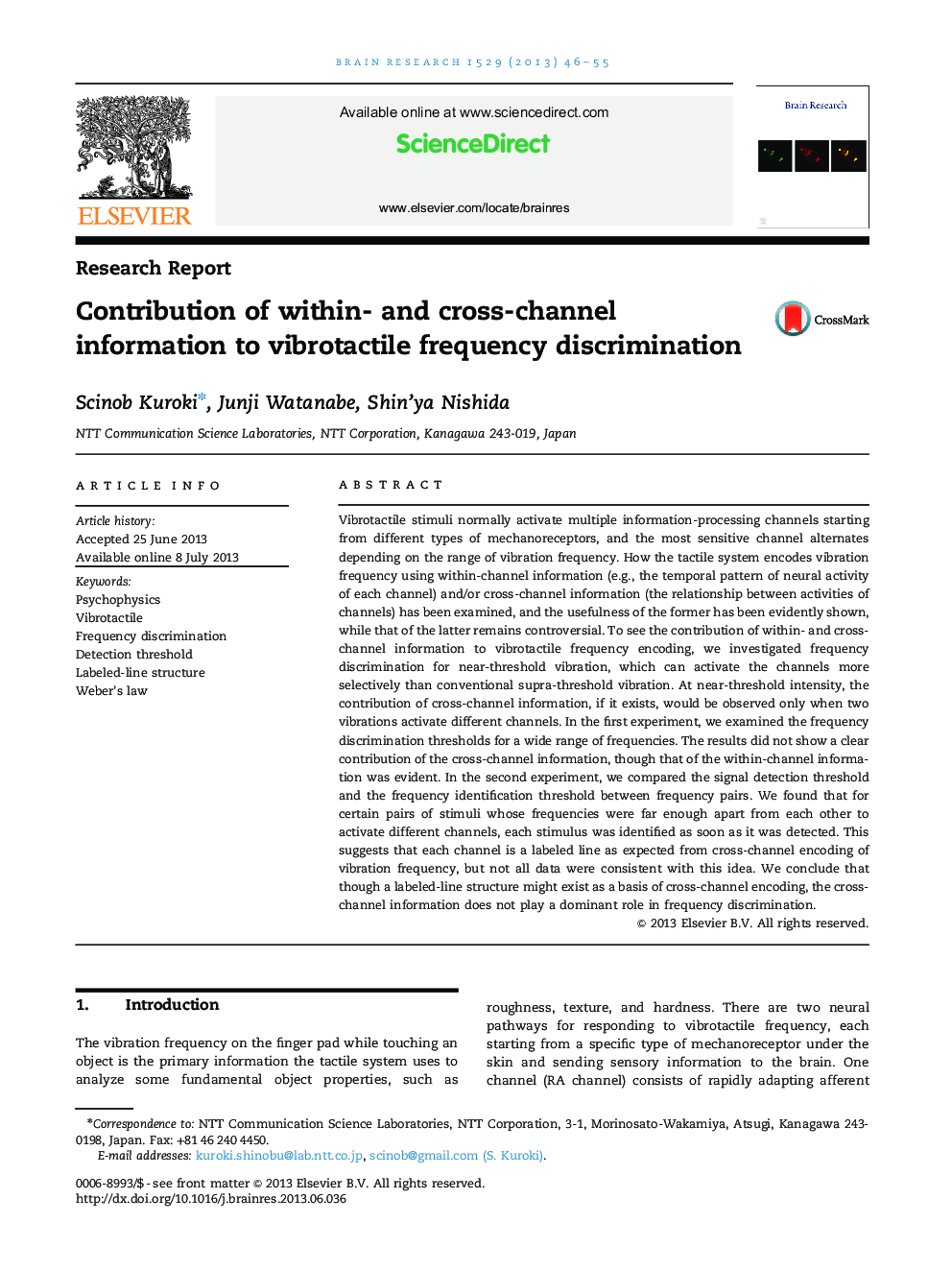| Article ID | Journal | Published Year | Pages | File Type |
|---|---|---|---|---|
| 6263760 | Brain Research | 2013 | 10 Pages |
â¢Vibration frequency can be discriminated without cross-channel information.â¢Vibrations with far apart frequencies are discriminable around detection threshold.â¢Labeled-line structure of each channel is partially supported.â¢Within-channel information dominantly supports vibrotactile encoding.â¢The cross-channel processing may also contribute, but its role is relatively minor.
Vibrotactile stimuli normally activate multiple information-processing channels starting from different types of mechanoreceptors, and the most sensitive channel alternates depending on the range of vibration frequency. How the tactile system encodes vibration frequency using within-channel information (e.g., the temporal pattern of neural activity of each channel) and/or cross-channel information (the relationship between activities of channels) has been examined, and the usefulness of the former has been evidently shown, while that of the latter remains controversial. To see the contribution of within- and cross-channel information to vibrotactile frequency encoding, we investigated frequency discrimination for near-threshold vibration, which can activate the channels more selectively than conventional supra-threshold vibration. At near-threshold intensity, the contribution of cross-channel information, if it exists, would be observed only when two vibrations activate different channels. In the first experiment, we examined the frequency discrimination thresholds for a wide range of frequencies. The results did not show a clear contribution of the cross-channel information, though that of the within-channel information was evident. In the second experiment, we compared the signal detection threshold and the frequency identification threshold between frequency pairs. We found that for certain pairs of stimuli whose frequencies were far enough apart from each other to activate different channels, each stimulus was identified as soon as it was detected. This suggests that each channel is a labeled line as expected from cross-channel encoding of vibration frequency, but not all data were consistent with this idea. We conclude that though a labeled-line structure might exist as a basis of cross-channel encoding, the cross-channel information does not play a dominant role in frequency discrimination.
